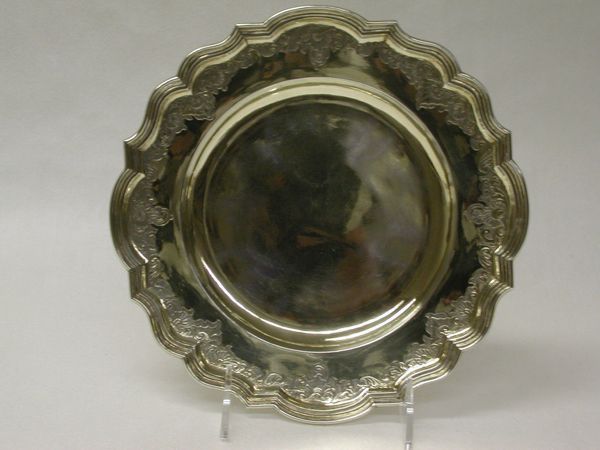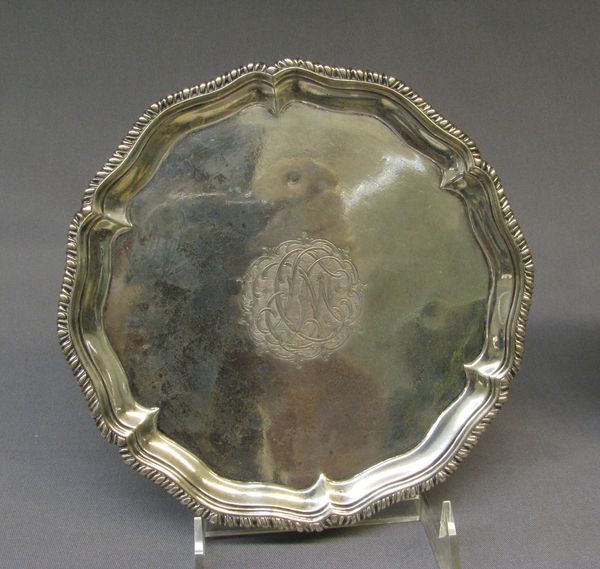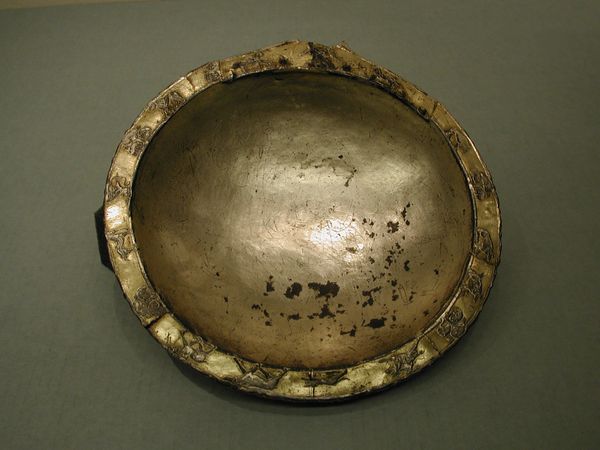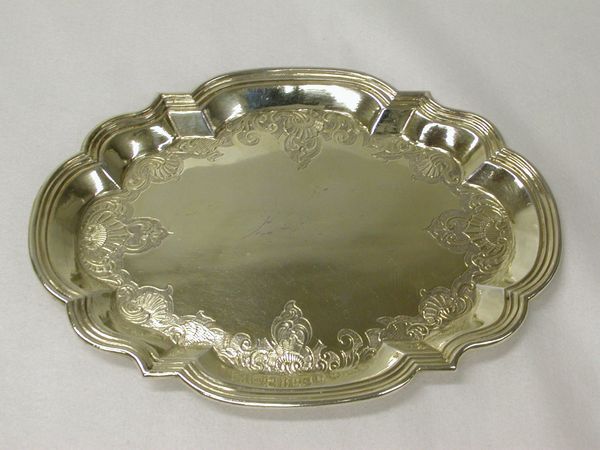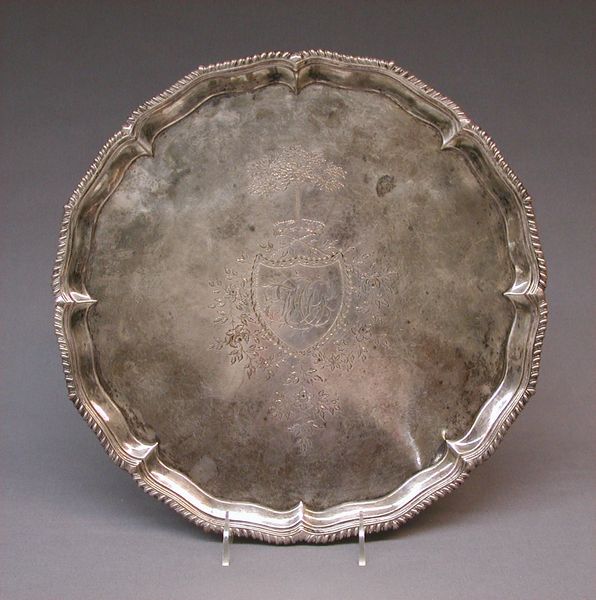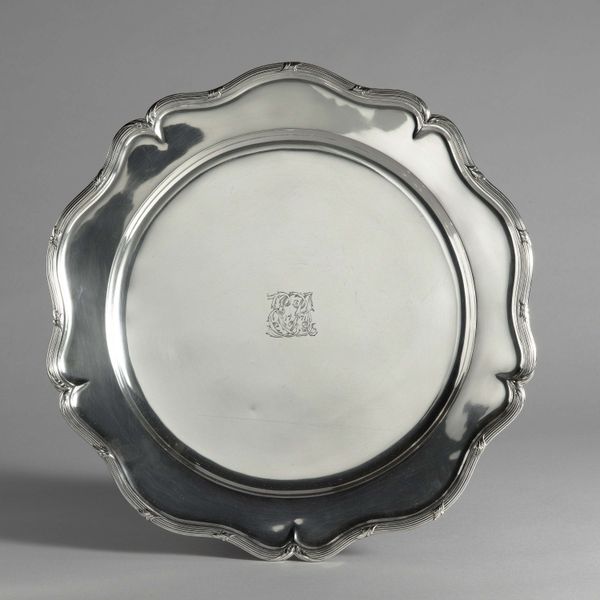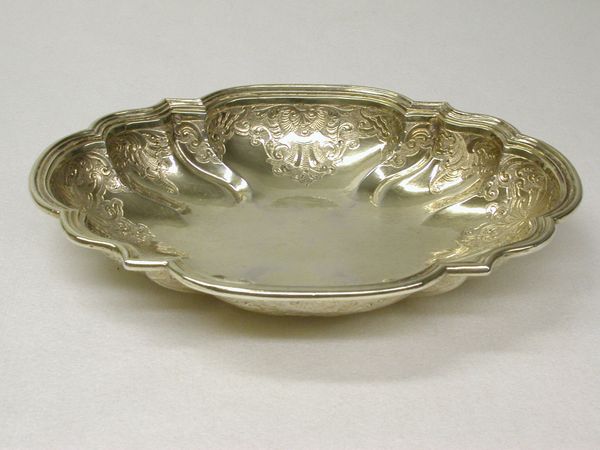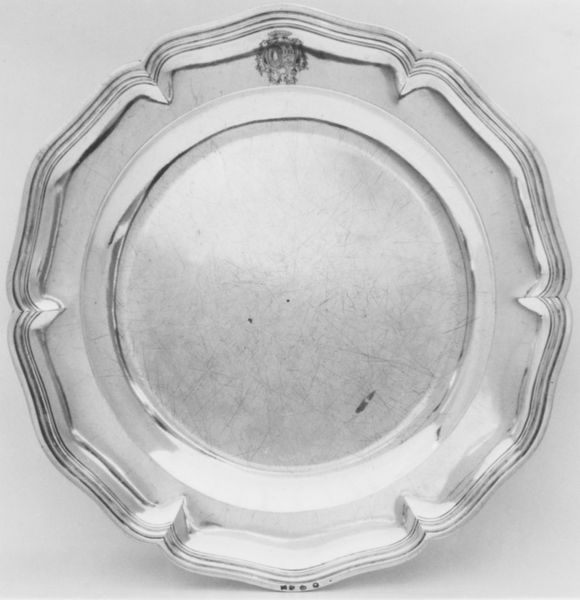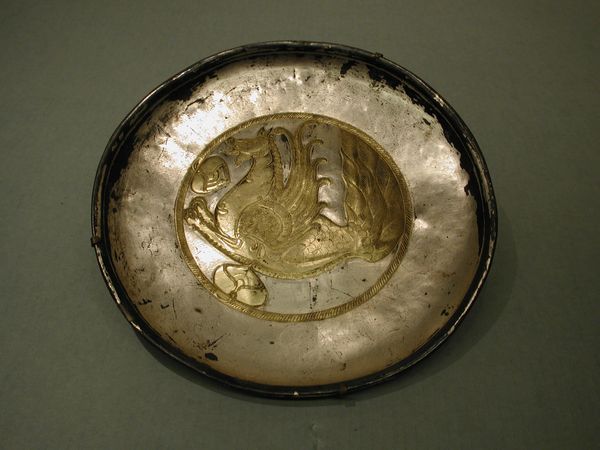
silver, metal, sculpture
#
silver
#
metal
#
sculpture
#
sculpture
#
decorative-art
Dimensions: Overall: 1 1/16 × 7 1/4 in. (2.7 × 18.4 cm)
Copyright: Public Domain
This salver was crafted by Thomas Hannam in the 1700s, and it’s made of silver. Think about what it meant to own something like this. Silver objects like salvers were luxury goods, reflecting the wealth and status of their owners. The material itself speaks to global trade networks and colonial exploitation, as silver was often extracted from mines in the Americas. The silversmithing process involved a great deal of hand work. The silver would have been hammered, shaped, and engraved with careful precision. Note the molded rim and the monogram in the center, all evidence of a skilled maker at work. These details elevate the salver from a simple object to a display of artistry. The salver reminds us that even seemingly simple objects can carry complex histories of labor, trade, and social status. It’s a testament to the skill of the maker and a reflection of the society in which it was created, blurring the lines between art, craft, and social history.
Comments
No comments
Be the first to comment and join the conversation on the ultimate creative platform.
